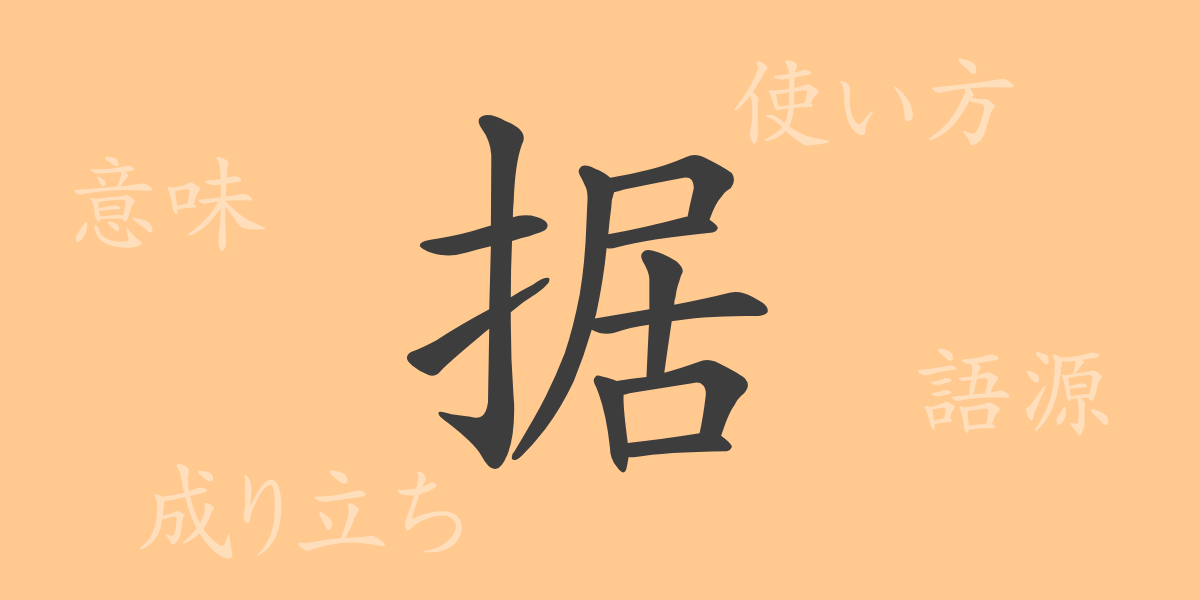The richness of the Japanese language is evident in its intricate system of kanji, each character imbued with its own unique history and significance, deeply embedded in the daily lives of the Japanese people. This article focuses on the kanji ‘据’ (スウ), exploring its origins, contemporary usage, and the deep cultural significance embedded within this character. Join us as we unravel the historical and cultural layers of ‘据’ and rediscover the allure of this kanji.
Origins of 据
The kanji ‘据’ has its roots in ancient China, originally depicted in oracle bone script. The character combines ‘手’ (hand) and ‘区’, illustrating the act of pressing down with the hand, initially meaning ‘to place’ or ‘to press’. Over time, as the character evolved, it came to be used more broadly in contexts involving setting or fixing something in place, leading to its modern usage.
Meaning and Usage of 据
The kanji ‘据’ encompasses meanings such as ‘to place,’ ‘to install,’ and ‘to fix.’ It is commonly used in terms such as ‘据え付ける’ (to install), referring to the installation of machinery or equipment. Metaphorically, it is also used in phrases like ‘心に据える’ (to hold firmly in the heart), signifying the firm establishment of thoughts or beliefs.
Readings, Stroke Count, and Radical of 据
Understanding the readings, stroke count, and radical of ‘据’ can deepen our appreciation of its uses and significance:
- Readings: On’yomi ‘キョ’, Kun’yomi ‘す.える’, ‘す.わる’.
- Stroke Count: 11 strokes.
- Radical: ‘手’ (hand), indicating actions related to handling or manipulating.
Phrases and Idioms Using 据
The kanji ‘据’ features in various idioms and phrases that reflect the linguistic richness of Japanese:
- 据え膳食わぬは男の恥: A proverb meaning that it is shameful for a man to miss out on opportunities that are presented to him.
- 据え置き: Refers to leaving things unchanged, often used in contexts like pricing or policies that remain the same without alteration.
- 据え膳: Literally, a meal laid out before one, metaphorically referring to a golden opportunity that should not be missed.
Conclusion on 据
The kanji ‘据’ encompasses a range of meanings from the physical act of placing something to the psychological act of affirming beliefs. Its usage in Japanese reflects cultural contexts through idioms and proverbs, enriching our understanding of the language’s nuances. By examining characters like ‘据’, we gain insights into the profound depths of Japanese language and culture, uncovering new dimensions in seemingly familiar words.

























